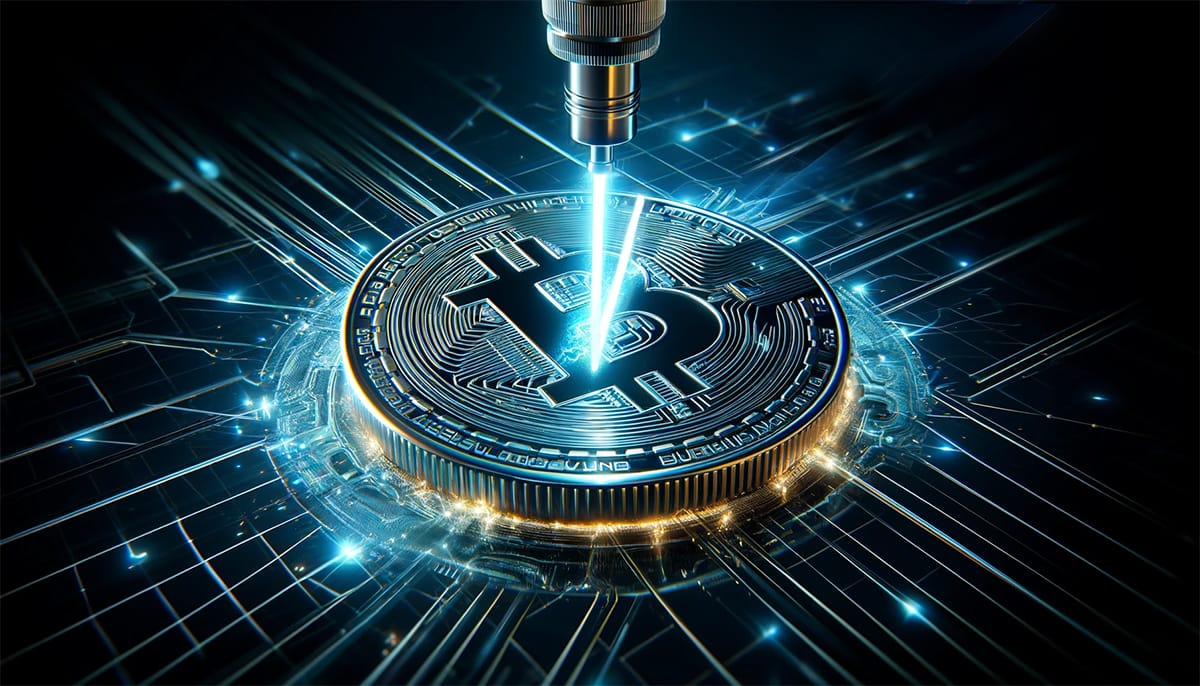The Bitcoin Halving (April 2024)

The Bitcoin ecosystem involves a diverse set of participants collectively working to build and maintain the world's most robust and decentralized network. Bitcoin, which functions as a neutral form of money beyond the control of any single entity, is in the early stages of establishing itself as a store of value. At the heart of this evolution lies the meticulously crafted monetary policy embedded in the Bitcoin protocol since its inception in 2009.
The monetary policy of Bitcoin is underpinned by two pivotal components: the predefined supply cap of 21 million coins and the carefully orchestrated issuance schedule that governs the creation of new bitcoin. In this short guide, we’ll explore the intricacies of the issuance schedule, shining a spotlight on a critical element known as the Bitcoin halving.
The Issuance Schedule of Bitcoin
The issuance of new bitcoins occurs through a process called mining. Bitcoin miners compete to solve advanced cryptographic functions to add new blocks to the blockchain while Bitcoin nodes validate these blocks to ensure they follow the rules of the network. Blocks are mined on average every 10 minutes and for the miners' efforts, they are rewarded with freshly minted bitcoins and transaction fees. This entire process is governed by a predefined issuance schedule that reduces the rate at which new bitcoins are created over time.
Initially set at 50 bitcoins per block, the issuance schedule undergoes a halving every 4 years or every 210,000 blocks. This reduction ensures that the total supply of Bitcoin approaches but never exceeds the predetermined supply cap of 21 million coins. As shown below, the gradual reduction in rewards not only regulates the creation of new bitcoins, but also introduces an element of increasing scarcity.
What is the Bitcoin Halving Event?
The halving, sometimes referred to as “the halvening”, is an event of great significance in the world of Bitcoin. It marks the precise moment the rewards for miners are halved, thereby reducing the rate at which new bitcoins enter circulation. This deliberate and predictable supply shock serves several purposes:
- Scarcity
The reduction in the rate of new bitcoin creation enhances its scarcity, a feature that closely aligns Bitcoin with assets like gold. As scarcity increases, the fundamental drivers of supply and demand come into play, driving the value of Bitcoin higher as we have seen historically.
- Mining Incentives
The Bitcoin halving acts as a continuous incentive for miners to innovate and optimize their operations. As rewards decrease, miners are compelled to use even more efficient hardware and energy solutions to maintain profitability. In turn, this contributes to increased security, efficiency, and sustainability of the Bitcoin network.
- Predictability
Unlike traditional monetary systems where decisions are subject to the whims of central authorities, the Bitcoin halving is an event hardcoded into the Bitcoin protocol alongside the supply cap of 21 million coins. These events can not be changed, fostering transparency and predictability in Bitcoins monetary policy for decades to come.
Looking Ahead: What Happens After 2140?
As we anticipate the fourth halving in April 2024, questions naturally arise regarding the post-2140 era. At that critical juncture, all 21 million bitcoins will have been mined, and miners will transition from receiving block rewards to relying solely on transaction fees.
While transaction fees have been steadily rising over time, the transition away from block rewards introduces a new dimension of economic incentives within the Bitcoin network. Miners, who play a pivotal role in securing the network, will be driven by fees from transactions made on the Bitcoin network. The sustainability and competitiveness of mining operations will hinge on the balance between transaction fees and operational costs. This shift not only underscores the adaptability of the protocol but also prompts questions about the future of Bitcoin in a fee driven environment.
As Bitcoin continues to evolve, the strict monetary policy hardcoded into the core protocol paves way for Bitcoin to establish itself not just as digital money, but also a store of value asset underpinned by inherent scarcity and reliability. The perpetual reduction in mining rewards driven by the halving will continue to serve as a catalyst for innovation and price appreciation, reinforcing the value proposition of Bitcoin now and in the future.
